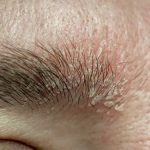Warts are a benign and common skin condition that can affect up to 10 percent of the population. Due to the contagious nature of these skin growths, warts are more common in young children who attend school, with up to 20 percent of all children affected.
Typically, warts are harmless and do not cause much pain. However, those who develop warts may want to get rid of the growths through wart removal treatments. The board-certified dermatologists at Columbia Skin Clinic can help answer the most frequently asked questions about warts and share the best treatment options.
What are warts?
Warts are small skin growths that look like blisters and are caused by viral strains of human papillomavirus (HPV). According to the National Library of Medicine, when the virus enters the skin through cuts and other openings, extra cell growth triggers the outermost layer to harden and raise, resulting in a wart. While warts can be contagious through skin contact, the growths usually do not develop immediately. Some warts take two to six months to appear.
Common places people encounter the virus are surfaces like doorknobs, keyboards and remote controls. The virus can live on surfaces for hours, so it’s essential to wash your hands after you use commonly touched items. To prevent warts from occurring and spreading, dermatologists also recommend avoiding shared towels and washcloths and public or shared hot tubs, showers and baths.
True or False? Warts disappear on their own.
Answer: True, for the most part.
Those with a healthy immune system can fight the virus that causes warts, but it may take up to a year or more for a wart to disappear naturally. To quicken the process, there are treatments to get rid of warts.
What are the most common types of warts?
Common warts
Common warts affect fingers and toes and are easy to find on the body due to their location and coloring. They are typically rough and rounded at the top and gray in color. If left untreated, common warts can become painful.
Plantar warts
These warts only grow on the soles of your feet. Unlike other warts that grow on top of your skin, plantar warts grow into your skin. A plantar wart will look like a hole in your skin, will often be hard to the touch, and will be surrounded by rough skin. These warts can make walking uncomfortable, so you will notice if you have one right away.
Flat warts
As the name suggests, flat warts have a flat top. They typically appear on the arms, face and legs. The small size of this wart type makes it hard to identify, but it is possible for them to grow in large numbers. Flat warts can appear tan, brown, pink or yellow.
Filiform warts
These small warts appear around your mouth and eyelids. Instead of appearing as a raised lump, filiform warts feature long protrusions that stick out from the infected site. The location and appearance of filiform warts make them difficult to treat at home.
Periungual warts
These warts only grow around fingernails and toenails. They can be extremely painful and can stunt nail growth.
How do I get rid of warts?
Luckily, there are a variety of treatment options available to remove warts, ranging from at-home treatments to visiting a board-certified dermatologist. Because wart removal can be tricky, some people prefer to go straight to the doctor for treatment to prevent recurrence.
According to Harvard Health Publishing, a common at-home treatment involves salicylic acid, while the most common professional treatments are cryotherapy and electrodesiccation.
Cryotherapy: A dermatologist uses liquid nitrogen on the wart, usually over the course of multiple treatments. The cold temperature of the liquid nitrogen freezes the wart to form a blister. Salicylic acid is then used to help the skin peel off.
Electrodesiccation: This treatment involves local anesthesia and is typically used if a wart does not respond to at-home treatments or cryotherapy. Once the area is numb, a healthcare professional uses a curette to scrape the wart off after the area has been dried with a needle. Unlike other treatments, this method may cause minor scarring.
Before trying home remedies, it is important to note that any warts on a sensitive area of your body, including your face or genitals, should never be removed at home. To prevent nerve damage, those with diabetes should never attempt to get rid of plantar warts at home.
When should I seek wart removal treatment by a dermatologist?
If a wart causes frequent pain or discomfort or you notice warts are spreading, you should make an appointment with a dermatologist to talk about wart removal options. Even painless warts can be resistant to over-the-counter treatments. A visit to a dermatologist is also warranted if warts continue to occur after you perform at-home treatments.
Most warts are harmless, but some people may feel the skin condition appears unpleasant or embarrassing. If you want to quickly get rid of a wart instead of waiting for it to disappear naturally or trying at-home treatments, a dermatologist can provide professional treatment. Warts are very common, so there is no need to hesitate when voicing questions or concerns to your doctor.
Where can I get treatment for warts in the Midlands?
Whether you need removal of a plantar wart, have a pesky common wart that is resistant to home treatments, or need help identifying the type of wart, the experienced team at Columbia Skin Clinic is here to help.
Our dermatology practice offers treatments for wart removal in our Columbia, Irmo, Lexington and Camden offices. Contact us today to make an appointment for any of your skin health needs.






